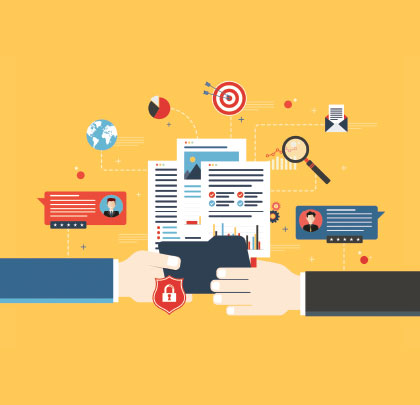The construction industry began embracing the lean methodology—the idea of eliminating waste (wasted time, wasted movement, wasted potential), improving productivity, and maximizing value—in the 1990s. But lean construction doesn’t always make its way off the jobsite and into the office.
Take eDiscovery for example—the process of preserving, collecting, filtering, reviewing, and producing data. Almost all construction projects carry the potential for disputes, which too often lead to litigation. And yet, when the need for eDiscovery arises, many construction companies reinvent the wheel each time by taking an ad hoc approach to the process. This leads to unnecessary chaos and increased risks and costs. Not very lean, is it?
By applying the lean methodology to the eDiscovery process, construction companies can avoid headaches and minimize risk, while reducing interruptions and costs.
Here are three steps to create an effective, lean eDiscovery process:
1. STANDARDIZE YOUR APPROACH
Eliminate the guesswork that can occur when handling data for litigation by establishing a standardized plan that outlines your organization’s eDiscovery procedures and best practices. This plan will serve as a sort of blueprint for the eDiscovery process. Include specific scenarios—such as how and where data is stored within the organization, who oversees targeted data collections, and what procedures to follow when eDiscovery is needed. Assign team members to each portion of the plan and establish a training program to ensure everyone understands their role. The plan should also include the option to outsource eDiscovery services when needed. eDiscovery projects vary widely depending on size and complexity, so it’s important to determine how much your team can take on itself and when to call in an outside vendor.
Establishing clear guidelines for all phases of the eDiscovery process will help your team lower costs, control your data, and expedite the legal process.
2. STREAMLINE THE PROCESS
It’s common for large construction companies with offices across the country to use various law firms and vendors depending on the case and location. This usually results in the company’s data being sent to a variety of disconnected vendors, often without the company’s knowledge, resulting in a chaotic, disorganized, and overly expensive process.
Consider this scenario:
Over a 6-month span, your company was involved in multiple cases. Case A required data from three custodians. That data was collected and sent to the applicable law firm and its eDiscovery vendor. Then, Case B required data from 10 custodians. This case was handled by a different law firm, so they collected data from those 10 custodians and sent it to the corresponding firm and vendor—but two of the custodians were also in Case A. Case C is handled by yet another law firm. This case involves the same three custodians from Case A and five from Case B, but guess what? You collected data from each individual all over again for each case. Not only does the data now exist in multiple places—leaving it outside of your company’s control and potentially prone to varying security risks—but different people are coding those same documents multiple times for privilege and following different protocols, vastly increasing your overall costs.
If this sounds familiar, consider centralizing your eDiscovery needs with a single provider and using a seamless end-to-end interface to manage your legal holds, data preservation, targeted collections, data culling, and more from one easy-to-access place. Not only will that save you time and allow you to reuse your data and leverage your legal spend across matters, it’ll also greatly simplify your data security. Also, look for a vendor that can provide a cloud-based system that allows you to track and monitor data activity and see who has access to what data. Most importantly, the platform you select should allow for data to only need to be collected once.
3. DETERMINE WHEN—AND WHEN NOT—TO USE TAR
Technology assisted review (TAR) is the process of electronically classifying documents based on input from expert reviewers. It can be a great asset in the eDiscovery process, as it reduces the amount of human review needed, dramatically decreasing the time, cost, and effort required to review data. A good TAR solution helps you find what is truly relevant and what is not—quickly and efficiently. Leveraging machine learning from the start of the review process increases the accuracy of the review, mitigates the risk of mistakes, and improves efficiency.
But TAR doesn’t make sense for every case. Using TAR on some types of data, like spreadsheets or files with multiple formulas, can actually make the review process more difficult and less accurate. Make sure your team or vendor understands what types of data will be reviewed so that you can determine when it makes sense to use TAR and when it doesn’t.
Don’t wait for litigation to arise to get a handle on your data or train your employees. Organizing your data as it’s accrued—instead of starting from scratch with each new case—will make the entire eDiscovery process infinitely smoother.
With these standard procedures in place, you’ll have a predictable process for handling and collecting data. And, instead of relying on reactive processes when litigation arises, they’ll follow a proactive approach that reduces risk, stress, and inefficiency.
About the Author:
Brian Schrader, Esq., is president and CEO of BIA (www.biaprotect.com), a leader in reliable, innovative, and cost-effective eDiscovery services. With early career experience in information management, computer technology, and the law, Brian cofounded BIA in 2002 and has since developed the firm’s reputation as an industry pioneer and a trusted partner for corporations and law firms around the world. He can be reached at bschrader@biaprotect.com.
_________________________________________________________________________
Modern Contractor Solutions, June 2018
Did you enjoy this article?
Subscribe to the FREE Digital Edition of Modern Contractor Solutions magazine.



